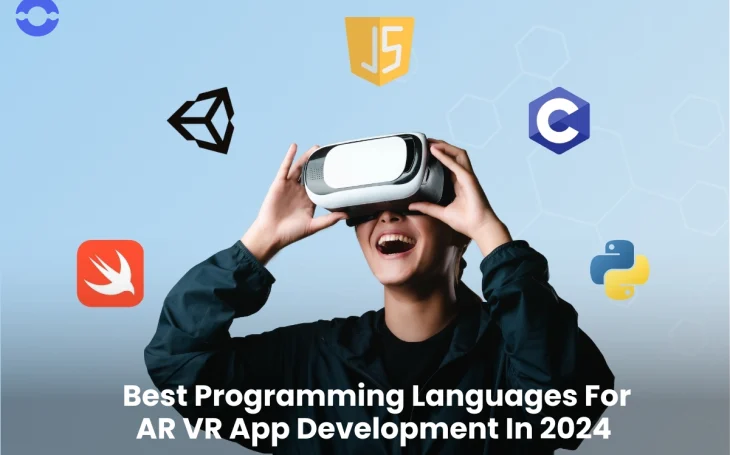
Nowadays, the use of AR and VR technologies has moved interactions with digital content to a new level, drawing virtual lines between what is true and what is fiction.
From a thrilling gaming experience to educational wonders and beyond, AR and VR applications have redefined what is possible with their customers’ imaginations.
They have created a completely new universe that their customers can be a part of via unforgettable adventures.
But before building an AR/VR application. Let’s answer the question,
Why does Choosing the right language matter?
Among the most significant choices you will have to make is choosing the programming language that is perfectly suited for you.
The language you will use will depend on the efficiency, performance, and features of the AR VR applications you will develop.
It is very much the same as picking the right tool for the task – each language has its strengths and specialties that can be used to develop an appropriate AR-VR experience.
It is not just about writing coding lines; it is about using technology to create immersive, engaging, and more importantly, attention-grabbing experiences that can be remembered by the users.
So, Let’s come back to our top programming languages for AR/VR development.
Top programming languages for AR VR app development in 2024
1. C# (Unity):
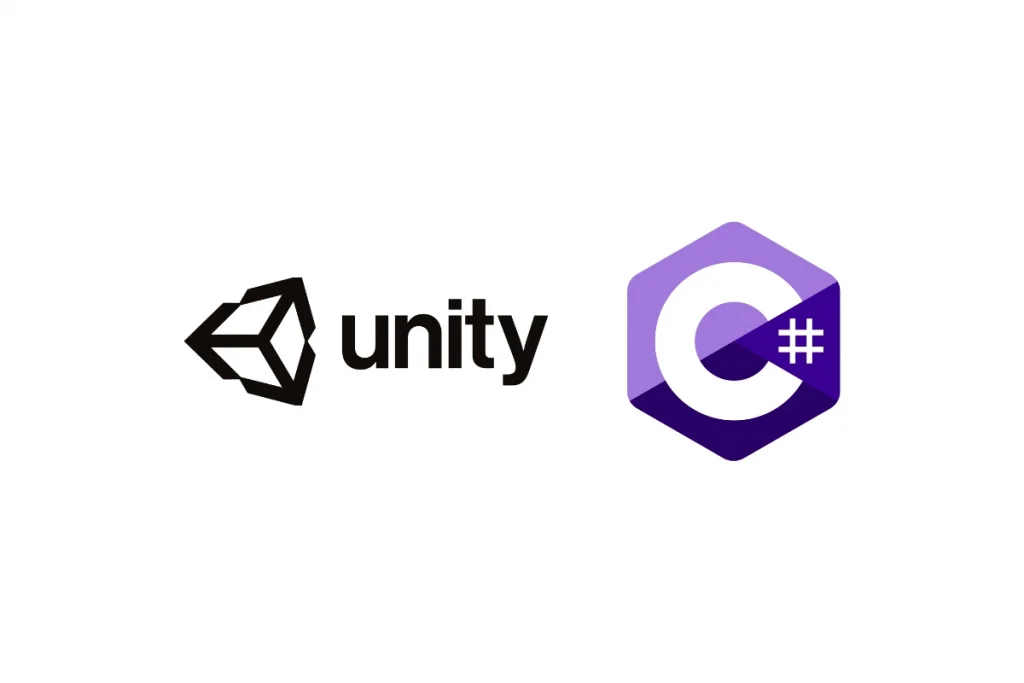
The C# is remarkable among other languages that are used to build AR VR apps, especially when with the advantage of using the Unity game engine.
Unity integrates a lot of integrated features and a user-friendly interface and hence is a leading choice for developers to build amazing experiences.
Unity with C# allows developers to tap into the strong engine features to develop AR and VR apps for different platforms, and these are the phones, tablets, and head-mounted displays.
Benefits of C# (Unity):
- Cross-Platform Compatibility:
C#, a core language of Unity, facilitates AR VR applications to run flawlessly on iOS, Android, Windows, and macOS.
- Rich Library Support:
Unity makes developers’ lives easy since various libraries are available for the creation and enhancement of codes in AR/VR projects.
- High Performance:
C# offers a higher rate of performance meaning beautiful and smooth animations as well as sophisticated visuals of the AR VR apps.
- Community Support:
Unity community, contributes by writing tutorials, making plugins, and providing assets to help newcomers with the AR VR app development.
As equals to language, choosing the right libraries is also crucial.
Below, we present an updated table showcasing some of the top C# libraries for AR and VR development, along with their key features and supported platforms.
C# (Unity) libraries for AR and VR development
| Library | Description | Features | Platforms |
| OpenXR | An open standard for VR and AR development | Cross-platform support, Extensible architecture | Windows, Linux, Android, iOS |
| Oculus SDK | Developed by Oculus for Rift and Quest devices | Advanced rendering, Hand tracking, Audio SDK | Windows, Android |
| Steam VR SDK | Valve’s SDK for SteamVR-compatible devices | Lighthouse tracking, Input system, Steamworks integration | Windows, Linux, macOS |
| Vuforia SDK | AR development platform by PTC | Image recognition, Object tracking, Smart terrain | iOS, Android, Windows |
| AR Core SDK | Google’s platform for building AR experiences | Motion tracking, Environmental understanding, Cloud Anchors | Android, iOS |
| AR Toolkit | Open-source library for AR development | Marker-based tracking, Camera calibration | Windows, macOS, Linux, Android, iOS |
2. JavaScript (WebVR)
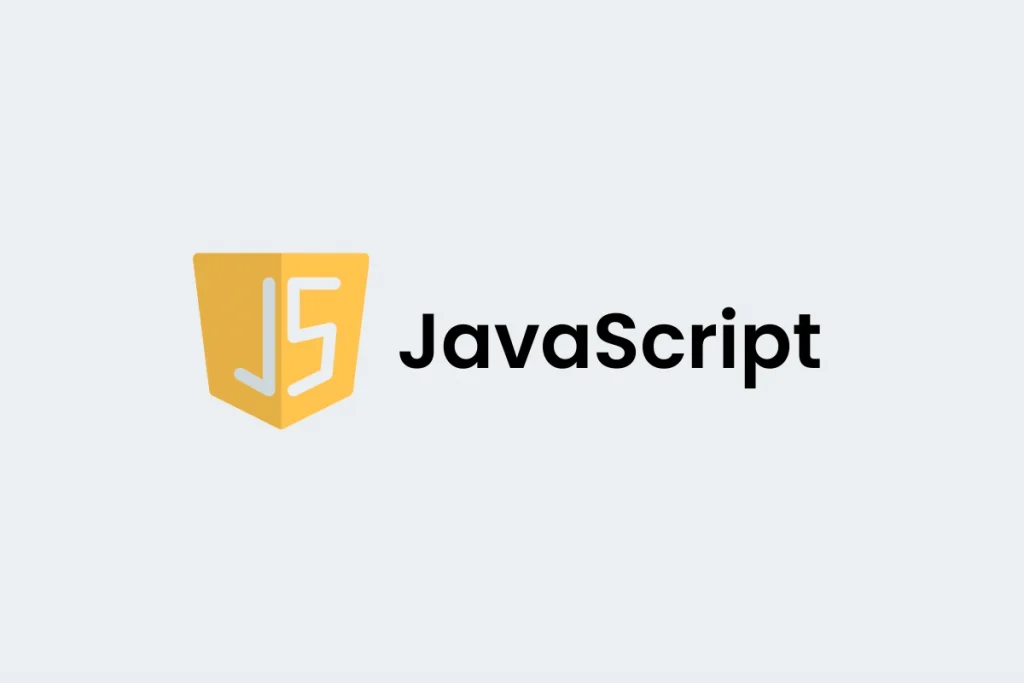
JavaScript is just one of the most powerful tools for AR and VR app development, having WebVR technology being used a lot.
This works well since it can be used in all popular web browsers, hence people can immerse themselves in AR and VR experiences on different devices like phones and VR headsets.
In the meantime, tools like A-Frame and Three.js help in adding 3D scenery, inter-activity, and exciting sounds that make the experiences more involving.
Benefits of JavaScript (WebVR):
- Easy to Access:
JavaScript and webvr help users access this information without downloading some special app.
They can do it simply by using their web browsers as far as their AR and VR are concerned.
- Works Everywhere:
HTML5-based WebVR is multiplatform. It can be run on desktops, smartphones, and VR headsets.
- Quick Testing:
JavaScript is flexible so the developers can continually change their ideas and see where they go best.
- Helpful Community:
JavaScript is a language supported by a large community of people who freely share their experiences and tips in this trade.
Hence it is easier for developers to get help and make their development process faster.
Here is the table that clarifies the libraries of JavaScript along with its strengths and weaknesses.
JavaScript libraries for AR and VR development:
| Library Name | Focus | Strengths | Weaknesses |
| A-Frame | WebVR/AR | Easy to use, works for both VR and basic AR, large community. | Limited native AR capabilities, additional libraries needed for complex AR. |
| Three.js | 3D Graphics | Powerful, versatile 3D graphics library, suitable for VR and AR with addons. | Steeper learning curve, more coding for VR/AR features. |
| AR.js | WebAR | Marker-based WebAR, image tracking, open-source. | Limited to marker-based AR, not for marker less or location-based AR. |
| Babylon.js | WebVR/AR | Open source supports WebVR and WebAR, strong 3D rendering capabilities. | A steeper learning curve compared to A-Frame, might need extra time to master. |
| React VR | VR | React-based library, component-based approach. | Primarily VR-focused, lacks comprehensive AR functionalities. |
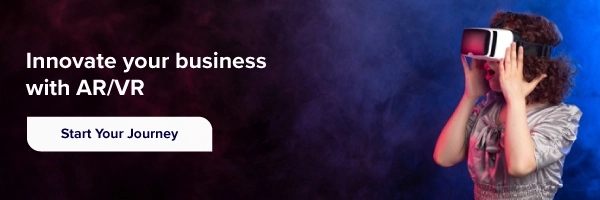
While these libraries contain many helpful options and functions, they make it possible for developers to develop AR and VR experiences that are immersive with great ease.
3. C++ (Unreal Engine)

C++ has a big place in the building of deep AR/VR experiences, however, using it with the Unreal Engine makes a most persuasive case.
Via its high performance, reliable functionality, and vast library, C++ enables developers to create complex and visually appealing applications that can be enjoyed on a variety of platforms that range from cell phones to high-end VR headsets.
Benefits of C++ (Unreal Engine):
- High Performance & Control:
C++ is more efficient and offers more control for the AR/VR applications necessary for the user experience, for which you need high graphics performance and physics in Unreal Engine VR games.
- Direct Hardware Access:
C++ permits direct access to hardware, boosting AR/VR device performance, which uses accurate motion tracking and real-time positioning for immersive experiences.
- Extensive Functionality:
The integration of C++ with Unreal Engine offers essential libraries for rendering, AI, and physics as well which gives the way for the creation of highly interactive and realistic AR/VR environments with dynamic lighting and rich interactive elements.
- Memory Management:
C++ provides super-fast and efficient memory management that is often required by AR/VR apps in their quest for speed and smooth navigation, thus leading to quick and smooth loading of content to platforms such as app stores.
Go through the below updated table showcasing some of the top C++ libraries for AR and VR development, along with their key features and supported platforms.
C++ (Unreal Engine) libraries for AR and VR development:
| Library | Description | Features | Platforms |
| OpenXR | An open standard for AR/VR development, ensuring interoperability | – Royalty-free standard. Seamless interoperability Support for various hardware platforms. | Multiple |
| SteamVR | Valve’s VR platform providing tools for immersive experiences | – Tools and APIs for VR development. Compatibility with various VR headsets. | Multiple |
| AR Core & ARKit | Google and Apple’s AR platforms for creating AR applications | – Tools for creating augmented reality apps. Integration with Android and iOS devices | Android, iOS |
| Unreal Engine VR & AR Frameworks | Built-in support for VR and AR development within Unreal Engine | – Motion tracking. Spatial audio Gesture. Recognition VR and AR experiences. | Multiple |
The following table offers an overview of the best C++ with unreal engine libraries for the framework of AR and VR development along with supported platforms and key features of each library.
4. Swift (ARKit)

Swift, Apple’s flexible programming language, captures most of the AR app development space with its sleek framework, ARKit in the apple ecosystem.
For iOS app development, Swift helps to develop powerful, clear augmented reality applications.
ARKit’s advanced tools enable developers to get the most out of digital content that encompasses spatial mapping, object recognition, as well as real-time tracking.
Benefits of Swift (ARKit):
- Integration with ARKit:
Swift seamlessly coupled with ARKit can take advantage of the tools that include recognition of real-world objects, surface tracking, and estimation of lighting for great AR events.
- Quick Testing:
Swift has a simple programming language, as Xcode has instruments for quick design concept verification.
- Big Community:
A lot of both Swift and ARKit developers exist among us. They offer suggestions and assistance, and they even have code examples.
- Safety First:
Swift is loaded with many features that keep your code safe and ensure your app doesn’t crash at random instances. This will make sure your AR applications are more robust and secure.
Here are some of the libraries of Swift used in AR and VR development having features and suitable platforms.
Swift (ARKit) libraries for AR and VR development:
| Library | Description | Features | Platforms |
| Reality Kit | High-level framework built on ARKit for creating immersive AR/VR experiences | Interactive environment, physics simulations | iOS, macOS |
| Scene Kit | Powerful framework for 3D graphics and animations in AR/VR content | Stunning visual effects, dynamic simulations | iOS, macOS |
| Core ML | Machine learning framework for integrating intelligence into AR apps | Object recognition, gesture detection | iOS |
5. Java (Android AR Core)
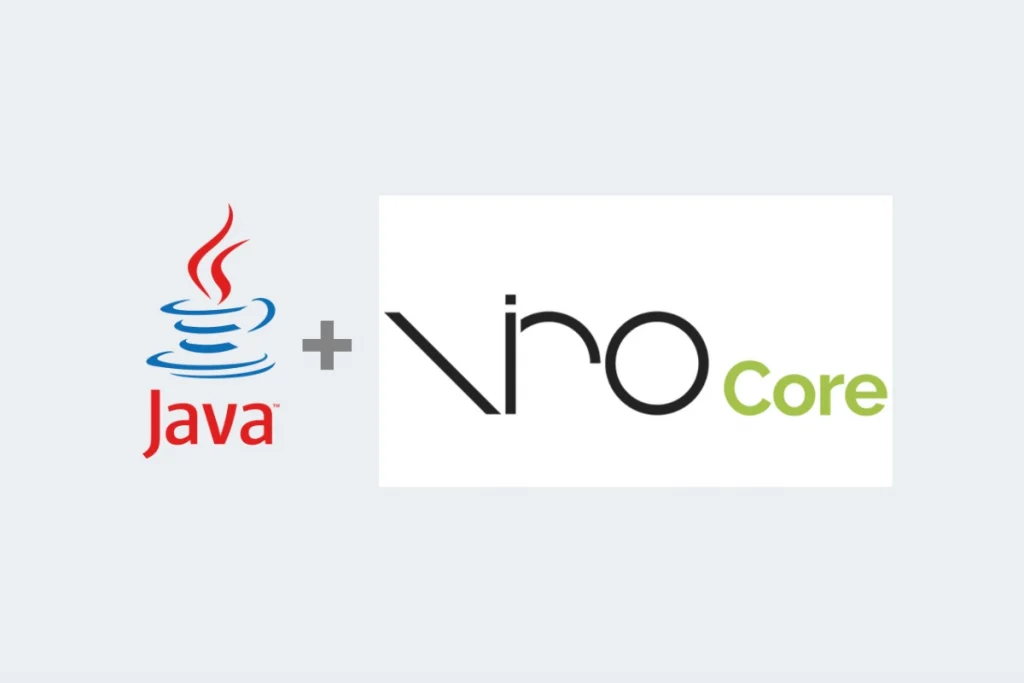
The language Java is the one that is increasingly being used to create AR VR apps, as far as we can tell, in the Android environment with its high-performance AR Core framework.
Its broad nature and popularity in crafting a pleasing experience in Android devices is one of the most popular reasons why it is the first choice for AR and VR applications.
With Java, programmers can use anything made for VR and AR development and do not have to cope with anything, making it easier to realize their projects in their full size.
Benefits of Java (Android AR Core):
- Android Studio Integration:
Java works perfectly with Android Studio which is designed to be the main tool for creating Android apps for this reason, the work of the Android developers is facilitated.
- Object-Oriented Approach:
Java relies on a type of programming that usually comes in bits and pieces, which implies it is easier to handle and maintain complex AR projects.
- Mature Language:
The existence of Java for a long time makes it user-friendly, so reliability is very important when designing AR apps.
- Performance Optimization:
An experienced Java programmer can ensure that the code runs smoothly on several different Android devices because the success of AR app development significantly depends on this.
Java is the Android core language and thus has numerous libraries. Below is a list of some of the core libraries used in AR and VR development.
Java (Android AR Core) libraries for AR and VR development:
| Library | Description | Features | Platforms |
| AR Core | Google’s AR platform for Android devices | Motion tracking, Environmental understanding, Light estimation | Android |
| Scene form | Scene graph API for rendering 3D scenes in AR | Simplified 3D rendering, Animation support, Material design integration | Android |
| AR Core Depth API | API for capturing depth information in AR experiences | Depth maps, Occlusion, Real-world geometry interaction | Android |
| AR Core Augmented Images | Recognizes and tracks images in AR experiences | Image tracking, Image anchors, Robust tracking in various lighting conditions | Android |
| AR Core Cloud Anchors | Enables multi-user AR experiences across devices | Shared anchors, Cloud storage integration, Persistent AR content | Android |
| AR Core Extensions | Additional features and capabilities for AR Core | Augmented Faces, Augmented Images, Augmented Reality Search | Android |
6. Python (AR VR Scripting):
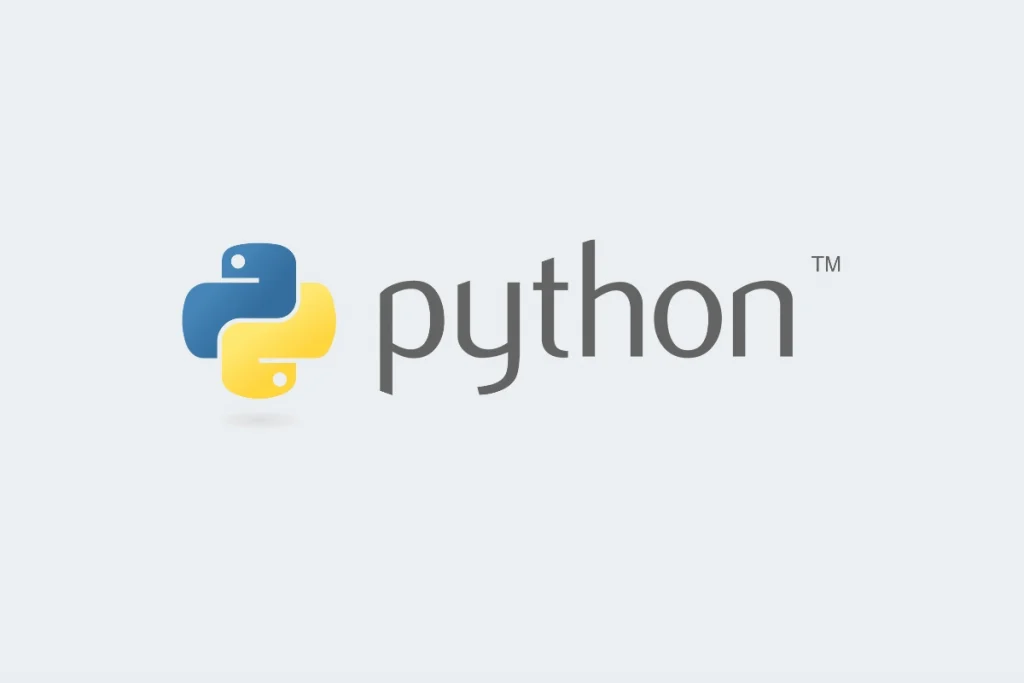
Python is one of the best tools for scripting in AR VR. With a combination of simplicity, versatility, and efficiency, it is widely used in various design tasks.
Its straightforward syntax and long library collection are mainly what developers like about it more often when they do design and AR VR application building that requires fast prototyping.
The developers can quickly code and develop AR interfaces through Python via frameworks such as OpenCV and Py game.
They do this with relative ease while being able to make complex, immersive VR simulations.
Benefits of Python (AR VR Scripting):
- Real-Time Interaction:
Python capable of functioning with real-time data processing ensures that you can build art VR systems that participate in dynamic interaction with the participants and spectators.
- Cost-Effectiveness:
The source code availability as well as the readily accessible tools and the data make Python an economical programming language to create AR VR projects.
- Industry Adoption:
The top AR VR companies like Oculus and Google are given as examples to prove that Python can be used in all stages of product development, hence showing that Python is relatable to this industry.
- Future-Proofing:
Given the forecast of growth and advancements of AR and VR technologies, the adaptation and quality of Python leave developers a better choice for the future in terms of this field.
Some of the top libraries of Python are shown below for AR and VR development.
Python (AR VR Scripting) libraries for AR and VR development:
| Library | Description | Features | Platforms |
| AR Core | Google’s AR platform for Android devices | Motion tracking, environmental understanding | Android |
| ARKit | Apple’s AR framework for iOS devices | Scene understanding, object occlusion | iOS |
| OpenCV | Computer vision library for real-time image processing | Image recognition, object tracking | Cross-platform |
| Py game | Python library for game development and multimedia | 2D graphics, audio playback | Cross-platform |
| Py Torch | Deep learning framework for building AI applications | Neural network modeling, training | Cross-platform |
| Vuforia | AR development platform for creating marker-based experiences | Image recognition, virtual buttons | Cross-platform |
| Unity3D | Game engine with AR VR support | 3D graphics, physics simulation | Cross-platform |
| Unreal Engine | Game engine with built-in VR capabilities | High-fidelity graphics, VR interactions | Cross-platform |
Overall, the above are the most preferred languages for AR and VR development, but there are also some other languages that are used by various organizations.
Additional Languages to develop AR & VR apps:
C#, C++, and Java are still the main three languages to develop AR and VR apps.
Nevertheless, some other languages were developed to go along with these platforms and to make the whole process of development even more powerful.
These include:
7. Lua (Roblox):
Lua is regarded as a noteworthy tool for AR VR app development, especially concerning the gaming sector.
Being lightweight yet flexible, Lua is the language you need if you want to design engaging virtual reality apps.
Developers can turn the Lua engine to their advantage to design an immersive world, create engaging gameplay mechanics, and materialize AR/VR concepts.
8. HTML/CSS (AR VR Web Development):
This indicates that there is no need that HTML and CSS to be just for building websites, they are the most important tools for creating web virtual reality and augmented reality experiences.
With technologies such as WebXR, developers can take advantage of HTML and CSS to fabricate a vivid 3D environment that users can perceive directly from a web browser.
The interactive 3D models, as well as the immersive storytelling, allay the advancement of HTML and CSS for AR and VR web development.
9. Rust (AR VR Gaming):
For the AR VR gaming limit that is taken into consideration, Rust is one of the greatest competitors.
By its performance, safety, and coexistence features makes Rust one of the top programming languages which enable developers to build games that take the GPU (graphics processing unit) capabilities to the limit.
Whether the goal of the development process is a realistic VR simulator or a fast-paced AR game, Rust’s low-level control and high-level abstractions make it the most popular choice among developers who work on cutting-edge AR VR projects.
Also Read: AR & VR Advantages And Disadvantages
Conclusion
Picking the correct programming language is very important, but building apps that use AR/VR technology is not just a matter of choosing the right language.
At BigOhTech, we’re dedicated to designing AR/VR apps for devices that deliver real pleasure to consumers. We endeavor to create apps that simply blow your mind.
We have a team with great experience in Unity, Swift, C++, and other programming languages. Therefore, we ensure that AR/VR projects that come to us are handled professionally.
Are you willing to make an AR/VR app? Contact BigOhTech today, and let’s make your imagination come true, together!




